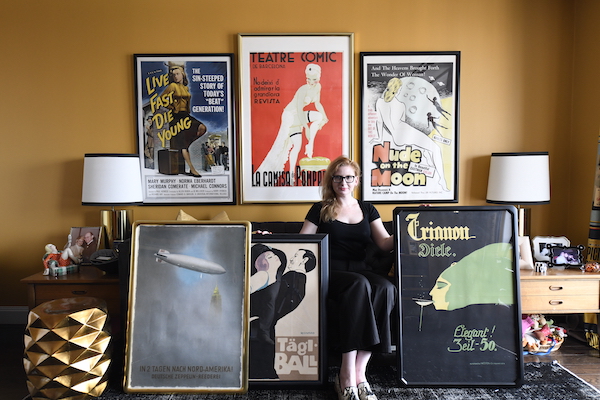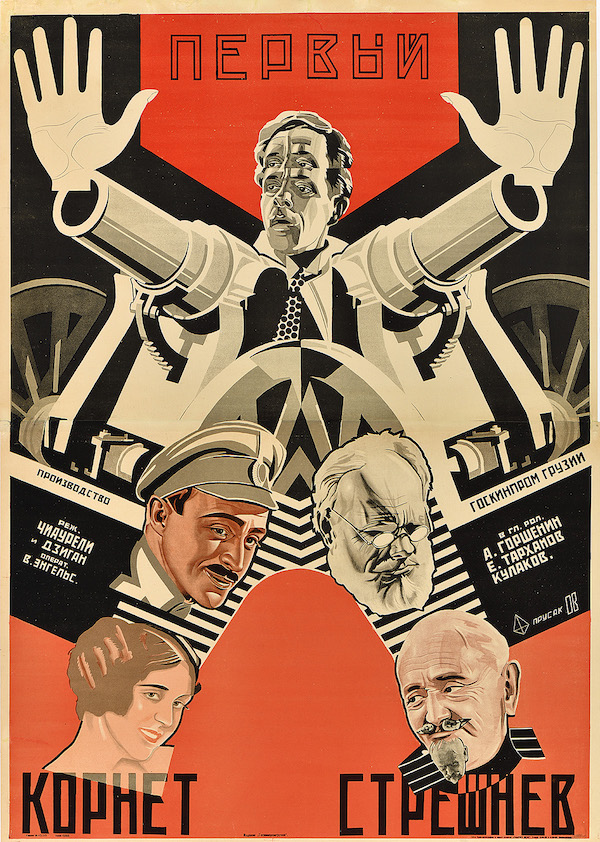
two new Feb. 25-Aug. 21 exhibitions possible. | Photo by Robert Feliciano
As the very first poster-themed museum in the United States, Poster House would have set a precedent no matter what they presented. So with their three-year anniversary just over three months away, the grand experiment that proved a worthy successor to the much-loved West 23rd Street home of TekServe is thriving under the watchful and discerning eyes of a staff responsible for programming that is as offbeat, compelling, scholarly, and surprising as the Chelsea neighborhood it calls home. Case in point, the two latest exhibitions. Read on, and see for yourself.
Scott Stiffler, for Chelsea Community News (CCNews): The June. 2019 opening of Poster House narrowly predates the emergence of COVID-19 and its impact on public gathering places. How was a consensus formed to react to the resulting restrictions, and how are we seeing that play out for contemporary visitors?
Angelina Lippert (Angelina): Poster House was the first museum in New York City to shut because of the COVID-19 outbreak. Our Director, Julia Knight, prioritizes the health and safety of our guests, and felt the most responsible thing to do was close until we had more clarity on the situation. Because of our relatively small size, we were also able to pivot faster than most institutions, creating an incredibly robust schedule of online programming, from daily social media videos where I casually gave viewers a two-minute poster history lesson to networking events for college students interested in careers in the museum world run by our Education Department. More urgently, we took the escalation in violence against members of the AAPI community very seriously. We had just opened an exhibition on the history of Chinese advertising posters, and were already looking at partnerships within the greater Chinese community in NYC. We found the perfect partner in Grace Young, who helped us create Coronavirus: Chinatown Stories, a series of videos where she interviewed business owners in Chinatown about how racism and the pandemic were impacting and ostensibly destroying their businesses. This activism was acknowledged over the subsequent months by the Smithsonian and the James Beard Foundation, and we couldn’t be prouder to have helped raise awareness on these issues.
Re: contemporary visitors, once we reopened the museum, we discovered that visitors were eager to get back to cultural institutions. Our January 2021 attendance was higher than what we’d seen before the pandemic, and that’s truly heartwarming to know that people feel safe in our space and are enthusiastic about our content.

Angelina: Our curatorial plan tries to balance something popular with something a bit more niche so that design and cultural enthusiasts of all backgrounds can find something of interest on view. The Utopian Avant-Garde showcases the most famous and important collection of Soviet film posters in the world. These are images most design students grew up seeing in books but are so rare that few have seen them in person—we knew the show would be a major draw. The other exhibition focuses on a female designer who many won’t have heard before, but whose story is both tragic and inspirational in as much as it shows the double standards under which women in the art world have historically been viewed. So I say, “Come for the Soviet film posters, stay for the feminism!”
CCNews: Before reading of her on your website, I was unaware of Ethel Reed´s brief presence in the poster world, or that her “life and work” touch upon “class, addiction, mental health, conservative societal expectations, and sexuality.” How are those elements represented in her work, and in what regard is she held by contemporary scholars?
Angelina: Ethel Reed is the most famous and important American female poster artist of the 19th century, but few people have heard of her. Her work is comparable to that of major designers like Aubrey Beardsley, Will Bradley, and Edward Penfield—and yet, because of her gender, she has been relegated to the annals of history without much thought. Her work is full of subtle coding that contemporary viewers can easily miss, but which we point out in depth in the wall text. We also look extensively at her personal correspondence that references all of these topics.
CCNews: The Soviet film posters exhibition describes the work of the featured artists as comprising a “golden age of Soviet graphic design.” What does that mean, in terms of this burst of creativity and innovative imagery?
Angelina: In my opinion, the posters produced during this time period in the Soviet Union are the greatest graphic accomplishment in history. That’s obviously my opinion, but a lot of scholars agree with that statement. The innovation and creativity seen in these compositions is unmatched and still appears fresh and exciting today.
CCNews: This is not the first time Poster House has showcased static work created to draw audiences to moving pictures. How did the featured artists succeed in that directive, and how does the fact that the films they promoted were works of propaganda factor into what they delivered?
Angelina: Most movie posters from all countries and time periods rely on a static image to promote a film, typically a scene from the movie featuring a lead character. Many of the posters created in the Soviet Union at this time take their compositional direction from the medium of film so motion is implied in the design. You can see this in the poster for, say, The Three Million Trial, where the two featured figures are repeated in triplicate on either side of the page, moving slightly between each frame as if it were the celluloid film rapidly moving past a light source.

All of these posters are an extension of propaganda because the government was using posters as the primary means of disseminating information to a largely illiterate population, and the posters for these movies utilized the graphic language of propaganda to draw people to the cinemas.
CCNews: What are other elements of Poster House that you hope will continue to draw visitors?
Angelina: I want audiences to realize that there really is something for everyone at Poster House. We have a robust First Friday series where on the first Friday of every month we feature workshops, tours, and activities for all ages in addition to later hours and free admission. We have children’s programming once a month that is both virtual and in person; we host everything from serious lectures to wacky Posters & Cocktails nights. Most importantly, though, is that posters are for everyone—unlike fine art, if a poster is speaking over your head, it’s failed. Communication is key, so we make sure that all of our shows are accessible and interesting for everyone.
Poster House is located at 119 W. 23rd St. (btw. Fifth & Sixth Aves.) and is open Thurs. through Sunday, 10am to 6pm. Free admission on Fridays. Otherwise, $12 for adults, $8 seniors over 60, veterans, and students/educators, and visitors with disabilities (free admission for 1 accompanying care partner). Poster House operates in compliance with the Key to NYC mandate. All museum visitors 5 and older must show proof they have received two vaccine doses, except for those who have received the one dose of the Johnson & Johnson vaccine. Vaccination records and IDs will be checked upon entry. Check the Plan Your Visit page for more details. To visit the Poster House website{s home page and learn more about its omission and programming, click here.


Chelsea Community News is made possible with the help of our awesome advertisers, and the support of our readers. If you like what you see, please consider taking part in our GoFundMe campaign (click here). To make a direct donation, give feedback, or send a Letter to the Editor, email scott@chelseacommunitynews.com.

You must be logged in to post a comment Login